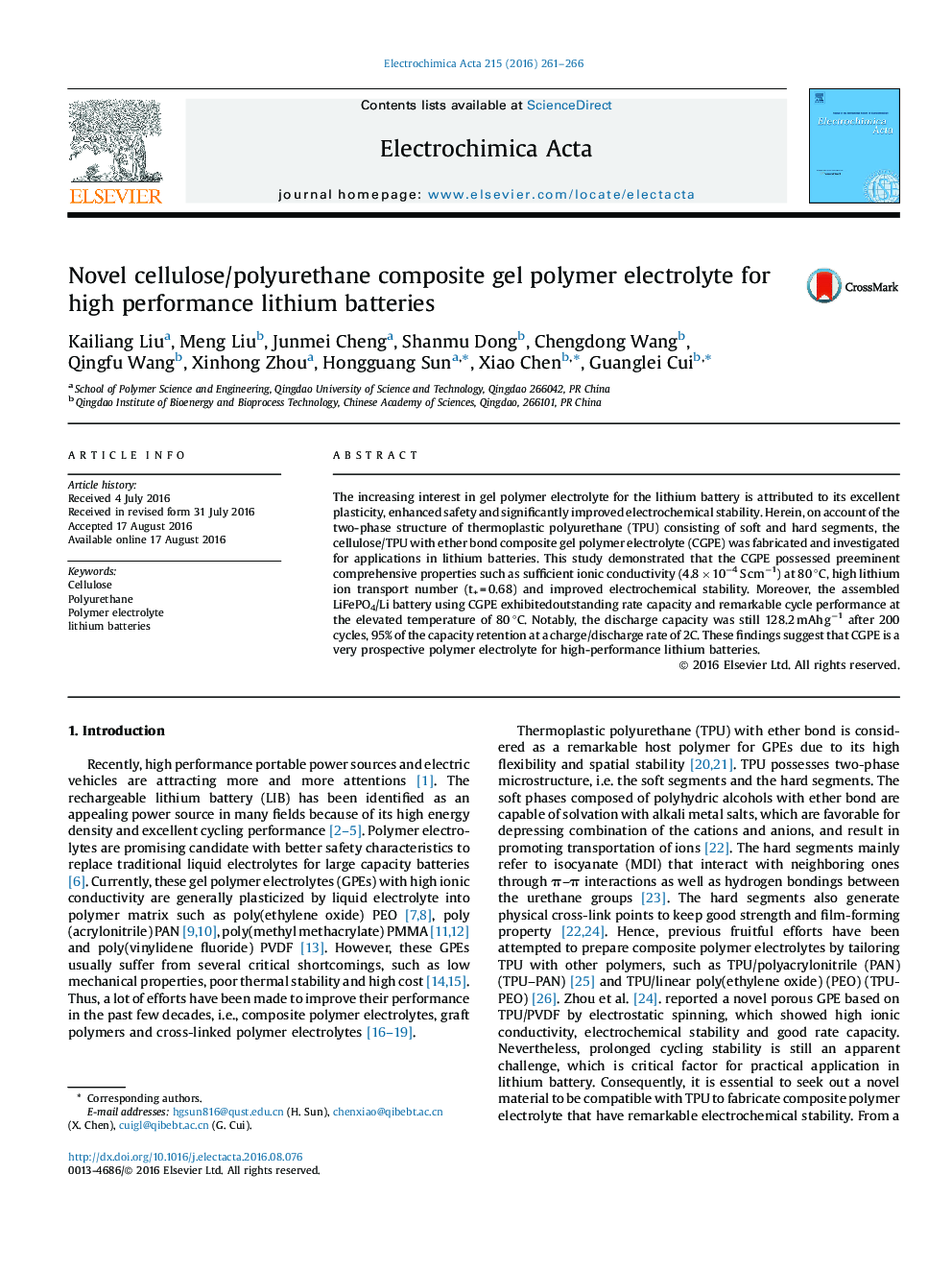| کد مقاله | کد نشریه | سال انتشار | مقاله انگلیسی | نسخه تمام متن |
|---|---|---|---|---|
| 6473136 | 1424142 | 2016 | 6 صفحه PDF | دانلود رایگان |
- Novel composite polymer electrolyte was fabricated by cellulose/polyurethane.
- The cellulose/polyurethane polymer electrolyte exhibits higher ionic conductivity and larger lithium ion transference number.
- Lithium battery using the polymer electrolyte shows remarkable rate capability.
- The discharge capacity was still 128.2 mAh gâ1 after 200 cycles, 95% of the capacity retention at a charge/discharge rate of 2C.
The increasing interest in gel polymer electrolyte for the lithium battery is attributed to its excellent plasticity, enhanced safety and significantly improved electrochemical stability. Herein, on account of the two-phase structure of thermoplastic polyurethane (TPU) consisting of soft and hard segments, the cellulose/TPU with ether bond composite gel polymer electrolyte (CGPE) was fabricated and investigated for applications in lithium batteries. This study demonstrated that the CGPE possessed preeminent comprehensive properties such as sufficient ionic conductivity (4.8 Ã 10â4 S cmâ1) at 80 °C, high lithium ion transport number (t+ = 0.68) and improved electrochemical stability. Moreover, the assembled LiFePO4/Li battery using CGPE exhibitedoutstanding rate capacity and remarkable cycle performance at the elevated temperature of 80 °C. Notably, the discharge capacity was still 128.2 mAh gâ1 after 200 cycles, 95% of the capacity retention at a charge/discharge rate of 2C. These findings suggest that CGPE is a very prospective polymer electrolyte for high-performance lithium batteries.
Journal: Electrochimica Acta - Volume 215, 10 October 2016, Pages 261-266
